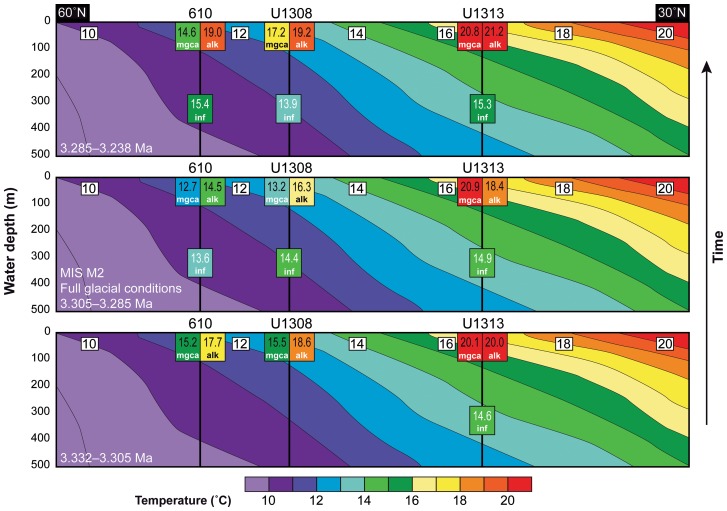Figure 4. Reconstructed sea-surface temperatures for the studied intervals prior to, during and after the full glacial conditions of MIS M2 along an eastern North Atlantic transect through DSDP Site 610, and IODP Sites U1308 and U1313 from 60°N, 10°W to 30°N, 30°W.
Background represents present day sea-water temperatures of the upper 500 m (from WOA2005, [81]). The insets below each site represent the surface water temperature based on alkenones (alk; surface water 0–10 m), Mg/Ca ratios of Globigerina bulloides (mgca; mixed layer 0–60 m) and sea-water temperature at 300–400 m based on Mg/Ca ratios of Globorotalia inflata (inf). The surface waters (SSTalk, SSTMg/Ca G. bulloides) show important cooling during MIS M2 with a steep N–S temperature gradient established. Low resolution sea-water temperature (SWTMg/Ca) reconstructions of Globorotalia inflata show that water at the permanent thermocline (300–400 m depth) remained stable and warm throughout the entire studied period. The glacial had no major effect on the deeper surface waters, except possibly at Site U1308 where one sample recorded temperatures as low as 11.8°C during MIS M2. The average values of 13.5, 14.2 and 15.1°C at Site 610, U1308 and U1313 respectively over the entire period illustrate that the entire upper water column during the Pliocene was warmer than today in the North Atlantic.

